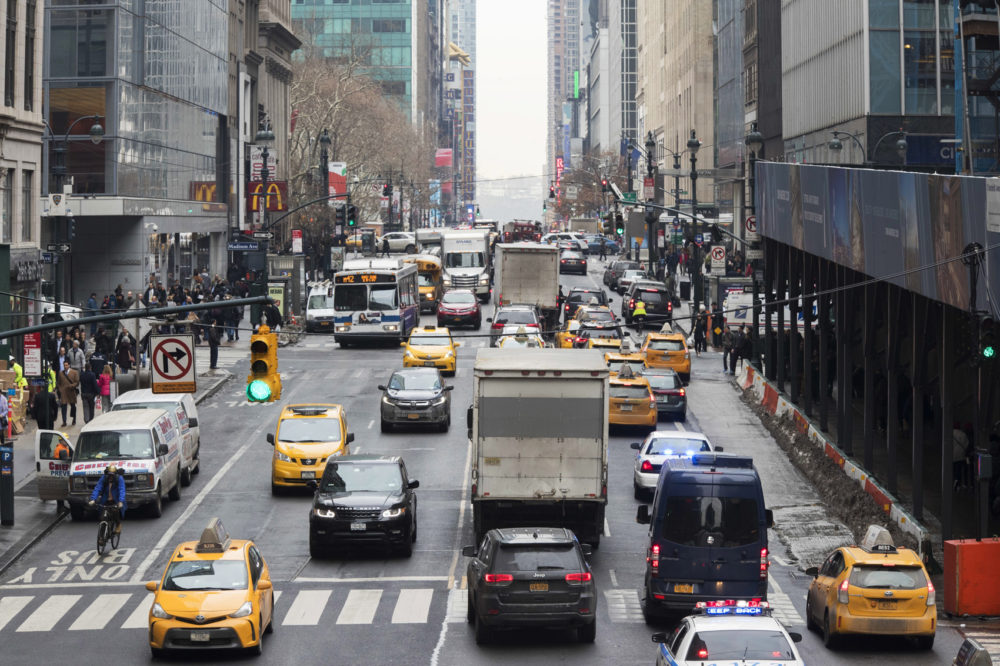Enforcing a $20 toll for cars and taxis to enter the central business district of Manhattan would reduce traffic congestion by up to 40% and greenhouse gas emissions by 15%, while also increasing the use of public transit by 6%, according to new research.

New York City is among the most congested traffic spots in the world, with a daytime population of almost four million people. Overcrowded facilities, undesirable travel times, excessive fuel consumption, and air pollution are among many other undesirable experiences faced by its residents every day.
Governor Andrew Cuomo urged the Legislature to pass congestion traffic pricing to cull vehicles from Manhattan and to help fund more than $1 billion in public transit and subway repairs. Tolls were slated to begin next year, but delays due to the COVID-19 pandemic, as well as in federal approval means the idea will likely be pushed back.
“If we charge a high dollar amount of tolls, we can decrease the number of cars and taxis, shrink gridlock, bring down carbon dioxide emissions and reduce particulate matter,” Oliver Gao, director of Cornell’s Center for Transportation, Environment and Community Health, said in a statement. “This is good news for the environment and from a public health perspective.”
The benefits of a toll
The study by Cornell University and the City College of New York studied how pricing scenarios in New York City can impact transportation demand, network performance, and traffic emissions. The core of the analysis is based on analyzing changes in the chain of daily activities of individuals in response to increases in the charging fees.
About one million tons of greenhouse gas emissions – mostly carbon dioxide – come from automobile and truck traffic in lower Manhattan annually. Modeling different scenarios using air quality processing software, the researchers determined exhaust emission reductions based on the charged tolls.
They found that a $5 toll would result in a reduction of 72,648 tons of greenhouse gas emissions annually. A $10 toll would lead to a reduction of 119,097 tons, and a $15 toll would yield a 157,747-ton drop. A $20 toll would be the ideal scenario, reducing greenhouse gas emissions by 182,065 tons per year.
Implementing entrance tolls would also drop the volume of particulate – dust and other tiny particles measuring less than 2.5 micrometers that are linked to poor health and give Manhattan a hanging fog. At the same time, traffic delays would be reduced between 15% and 32%, depending on the pricing scenario.
“All of us know that policymakers don’t like to charge people for driving into the city. Policymakers try to avoid it. But if we want to avoid climate change impact, these are the kind of policies that need to be considered and implemented,” Cornell postdoctoral researcher Mohammad Tayarani said in a statement.
The study was published in the journal Sustainability.









